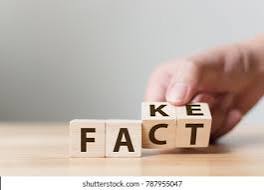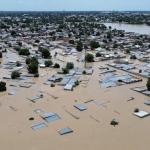Combatting Fake News
By Saheed Sunday
Disinformation and fake news are two huge banes to society. In the 21st century where most people are accessible to a lot of information, it becomes quite a hard task to decide which one to filter out as being credible and the one to filter out as being fake. However, falling into this pothole can be a big slap to persons. This is because fake news have the ability to spread like wildfire, and even if there comes a torrent of water putting it off afterwards, what about those things that have already been burnt to crisp? Therefore, this essay is going to address how to combat fake news and disinformation through media literacy education, technology solutions, and policy and regulations.
To start with, fake news and disinformation can be combatted through media literacy education. That is, the society should accustom to itself to learning about the media and what constitutes it. This way, they are open to critical thinking skills which will help them with the analysis and questioning of any pieces of information they encounter. Also, being a media literate is not meant to be achieved through a degree alone. The world’s fate rests on what the media says, so by effect, everyone who is of the world should make an effort to know about it. Media literacy will educate the populace about various fact-checking tools here information can be verified. Some fact-checking tools include InVid, Duplichecker, Ground News, FactCheck, Google Fact Checker Explorer, Truth or Fiction, and Lead Stories.
Furthermore, fake news can also be combatted through technology solutions. The creation and implementation of algorithms and Artificial Intelligence which are specially designed to fish out and detect fake news will reduce the spread of it. The awareness of the existence of algorithms and Artifical Intelligence towards the cause of combatting fake news will go a long way. Likewise, these fact-checking tools can also be moved down to the comfort of people. Rather than having them as separate entities across different web locations, it will be easier to integrate these tools into social media platform which people have been said to frequent a lot. This will make provision for the verification of content that goes around.
What is more, there should be some policy and regulations towards the battle against fake news. That is, policymakers across the world should enforce regulations which will not allow users get their contents out unless they have provided enough details to prove the trustability and genuity of the news being passed across. This way, there will be transparency in what is being put out. By the virtue of enforcing regulatory measures, 'disseminers' of fake news can be held accountable.
In conclusion, although the existence of fake news and disinformation is a factor that will likely prevail for as long as the media does, we ourselves can see to its reduction in the society through motifs such as taking steps towards media literacy education, seeking solutions from technology, and enforcing policy and regulations.





